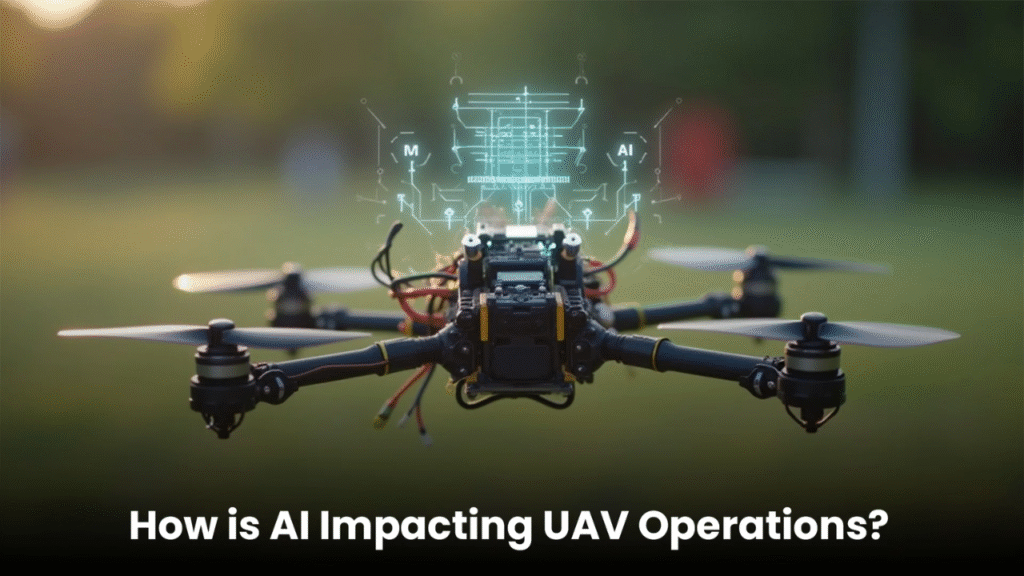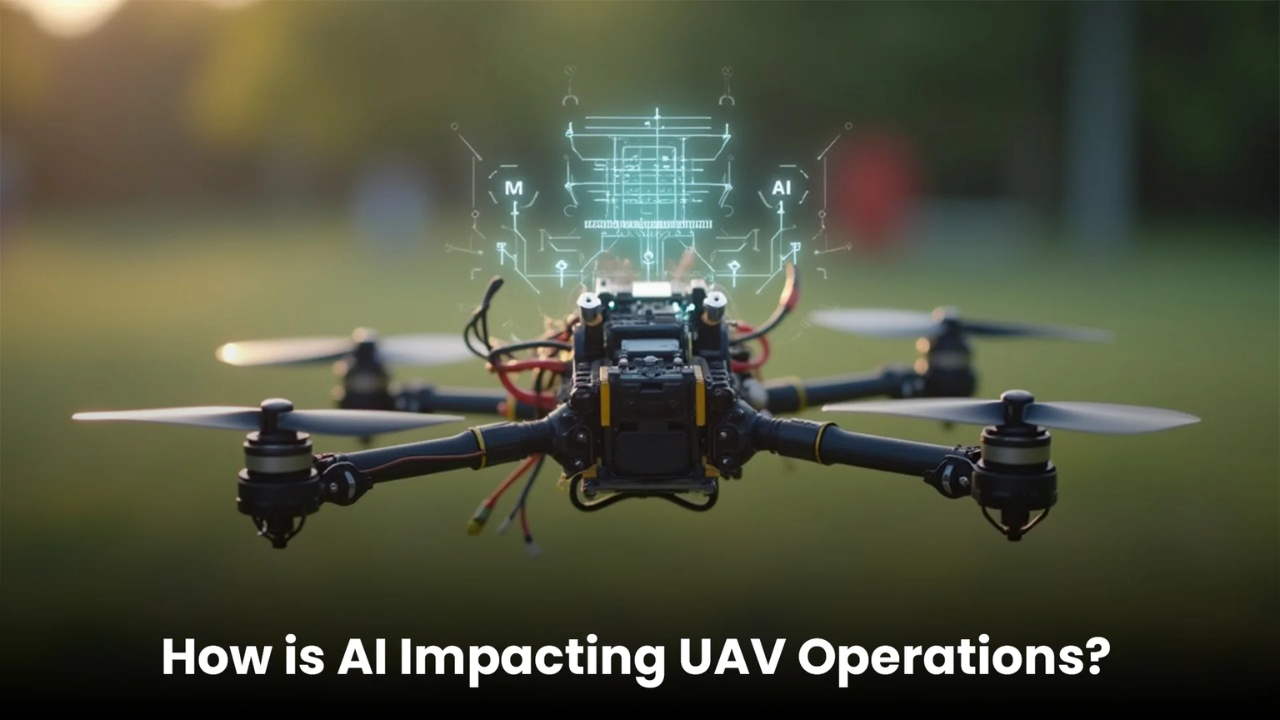
Once limited to remote-controlled flight, drones have now evolved into intelligent flying systems thanks to artificial intelligence. From monitoring high-security areas to delivering your latest online order or even saving lives during disasters, AI is pushing the limits of what drones can do.
By combining real-time data analysis, autonomous decision-making, and advanced navigation, AI-powered drones are transforming industries and redefining the future of air-based automation. Here’s an in-depth look into how AI is changing the landscape of drones for surveillance, delivery, and rescue operations.
What Makes Drones “Smart”?
A drone becomes “smart” when it integrates AI capabilities such as computer vision, sensor fusion, machine learning, and real-time analytics. These technologies enable drones to fly autonomously, detect and classify objects, avoid obstacles, plan routes dynamically, and respond intelligently to changing environments without human intervention.
1. AI in Drone Surveillance
AI-enabled surveillance drones are revolutionizing monitoring and security in both public and private sectors.
Key Applications:
- Border patrol and coastal surveillance
- Intrusion detection in restricted zones
- Monitoring crowds at public events
- Infrastructure inspections (bridges, pipelines, power lines)
AI Capabilities:
- Computer Vision: Identifies people, vehicles, and suspicious activity.
- Facial Recognition: Matches individuals with watchlists or databases.
- Anomaly Detection: Flags unexpected movements or patterns in real time.
- Predictive Monitoring: Anticipates potential threats using historical data.
Use Case Example:
AI-powered drones are now used by law enforcement in some countries to monitor large gatherings and instantly alert teams about crowd density or suspicious objects.
2. AI in Drone Delivery
Drone delivery services are becoming a practical reality, particularly in logistics, e-commerce, and healthcare.
Key Applications:
- Package delivery to urban and rural areas
- Medical supply transport in emergencies
- Food delivery in congested regions
- Warehouse automation
AI Capabilities:
- Route Optimization: AI calculates the most efficient, weather-safe flight path.
- Obstacle Avoidance: Real-time sensors and machine learning help drones avoid trees, buildings, or birds.
- Drop-Off Verification: Computer vision confirms correct address and landing zone.
- Fleet Coordination: AI manages drone traffic, delivery timing, and battery life across multiple units.
Use Case Example:
Companies like Amazon and Zipline are using AI-powered drones to deliver goods and critical medical supplies to remote regions with little infrastructure.
3. AI in Search and Rescue Missions
AI-driven drones are becoming essential tools in emergency response and disaster recovery.
Key Applications:
- Locating missing persons in forests, mountains, or collapsed buildings
- Delivering aid in disaster zones (earthquakes, floods)
- Providing aerial assessment in hard-to-reach areas
- Firefighting support
AI Capabilities:
- Thermal Imaging and Computer Vision: Locate heat signatures of trapped people.
- Autonomous Search Patterns: Drones can cover large areas efficiently.
- Multi-Drone Collaboration: AI enables swarms of drones to divide tasks.
- Real-Time Data Transmission: Instant video feed and location updates to rescuers.
Use Case Example:
During wildfires or floods, AI-powered drones can identify stranded individuals from the air, significantly speeding up response times.
Overview Table: AI Drone Applications by Domain
| Application Area | Key Benefits | AI Capabilities Involved |
|---|---|---|
| Surveillance | Real-time threat detection | Computer vision, object recognition |
| Delivery | Faster, contactless logistics | Route optimization, landing verification |
| Search & Rescue | Faster location of victims | Thermal imaging, autonomous navigation |
| Agriculture | Crop monitoring, pest detection | Pattern analysis, multispectral imaging |
| Infrastructure | Safer inspections | Fault detection, 3D mapping |
| Disaster Response | Aerial situational awareness | Anomaly detection, terrain analysis |
Advantages of AI-Powered Drones
- Autonomous Operations: No need for continuous human control or input.
- 24/7 Monitoring: AI enables long, uninterrupted surveillance missions.
- Rapid Deployment: Drones can be deployed in minutes during emergencies.
- Precision: Enhanced accuracy in delivery and detection tasks.
- Scalability: AI allows multiple drones to operate in coordinated networks.
- Cost Efficiency: Reduces the need for human labor in high-risk scenarios.
Challenges and Risks
- Privacy Concerns: Widespread drone surveillance can raise civil liberty questions.
- Regulatory Barriers: Airspace regulations often lag behind technology.
- Cybersecurity Threats: AI-driven drones can be targets for hacking or spoofing.
- Weather Dependency: Drones still struggle in harsh environmental conditions.
- Battery and Payload Limits: Constraints on flight duration and carrying capacity.
- Ethical Use: Especially in law enforcement and military contexts, ethical deployment remains a hot topic.
Comparison Table: Drone Use in Key Sectors
| Sector | Primary Use | AI Features Used | Impact Level |
|---|---|---|---|
| Military Surveillance | Recon and tracking | Pattern recognition, swarm AI | Very High |
| Logistics | Delivery and inventory | Path optimization, object detection | High |
| Emergency Services | Rescue and relief | Terrain analysis, heat detection | Very High |
| Smart Cities | Traffic and crowd monitoring | Real-time analytics, anomaly detection | Medium to High |
| Agriculture | Crop scanning and analysis | Image segmentation, growth prediction | Medium |
3 Best One-Line FAQs
Q1: How does AI help drones in rescue operations?
AI enables drones to identify human heat signatures and navigate complex terrains autonomously.
Q2: Are delivery drones using AI currently operational?
Yes, companies like Amazon, Zipline, and Wing are using AI to optimize routes and drop-offs.
Q3: Do surveillance drones use facial recognition?
Many AI surveillance drones do employ facial recognition, though their use is often regulated.
Final Thoughts
AI-powered drones are no longer science fiction—they’re active agents in some of today’s most critical fields. Whether monitoring city streets, delivering medical kits to remote areas, or searching for disaster survivors, these intelligent flying machines are proving to be efficient, scalable, and sometimes life-saving.

